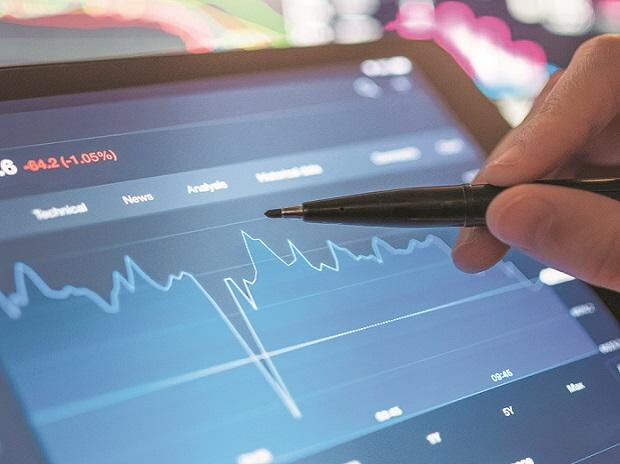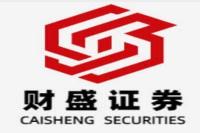Unlocking the Power of Solar: How Companies Like Zhonggang Tianyuan Benefit from Distributed Photovoltaic Projects
Meta Description: Explore the growing trend of distributed photovoltaic (PV) projects in industrial settings, examining the advantages and benefits for companies like Zhonggang Tianyuan, including cost savings, environmental impact, and enhanced sustainability.
Imagine a world where businesses not only power their operations but also contribute to a greener future. This vision is becoming a reality through the widespread adoption of distributed photovoltaic (PV) projects, particularly in industrial settings. Companies like Zhonggang Tianyuan are leading the way, harnessing the power of the sun to reduce energy costs and minimize their environmental footprint. This article delves into the benefits and intricacies of these innovative projects, providing insights into their potential for businesses across various industries.
Distributed Photovoltaic: A Game-Changer for Industrial Sustainability
Distributed PV projects, also known as rooftop solar or on-site solar, are revolutionizing the way businesses approach energy consumption. Instead of relying solely on the grid, these projects empower companies to generate their own clean electricity, often directly at their point of use. This decentralized approach offers a multitude of advantages, particularly for energy-intensive industries like manufacturing and data centers.
Zhonggang Tianyuan: A Case Study in Solar Innovation
Zhonggang Tianyuan, a prominent player in the steel industry, is a shining example of how distributed PV projects can transform businesses. The company has strategically integrated solar panels into its industrial park, embracing a "self-generation, surplus power to the grid" model. This innovative approach has yielded substantial benefits:
1. Significant Cost Reductions:
By utilizing solar energy, Zhonggang Tianyuan has significantly reduced its reliance on traditional electricity sources. This has resulted in substantial cost savings, boosting the company's bottom line and enhancing its overall financial performance. The impact of such cost reductions can be substantial, especially in industries where energy consumption is a major expense.
2. Environmental Stewardship:
The adoption of distributed PV projects aligns perfectly with Zhonggang Tianyuan's commitment to environmental sustainability. By generating clean energy on-site, the company has decreased its carbon footprint, contributing to a cleaner and healthier planet. This commitment to sustainability is becoming increasingly important for businesses looking to attract investors, customers, and top talent.
3. Enhanced Energy Security:
Distributed PV projects provide a level of energy security that traditional grid-based systems lack. By generating their own electricity, companies like Zhonggang Tianyuan are less vulnerable to disruptions in the power grid. This can be particularly valuable in regions prone to power outages or natural disasters.
4. Positive Public Perception:
By embracing sustainable energy solutions, Zhonggang Tianyuan has enhanced its public perception. Companies that prioritize environmental responsibility are increasingly viewed favorably by consumers, investors, and regulators. This positive image can translate into improved brand reputation and increased market share.
5. Government Incentives:
Many governments offer incentives and subsidies to encourage the adoption of renewable energy technologies. These incentives can significantly reduce the upfront costs of installing distributed PV projects, making them even more attractive for businesses.
The Key Elements of Successful Distributed PV Projects
The success of distributed PV projects depends on careful planning, execution, and ongoing maintenance. Here are some essential considerations:
1. Site Assessment:
A thorough site assessment is crucial to determine the optimal location for solar panels, considering factors such as roof space, solar irradiance, and potential shading.
2. System Design:
The design of the PV system must be tailored to the specific energy needs of the business, taking into account factors like power consumption patterns and energy storage requirements.
3. Financing Options:
Various financing options are available for distributed PV projects, including loans, leases, and power purchase agreements (PPAs). Choosing the right financing structure is critical to ensuring the project's financial viability.
4. Installation and Maintenance:
The installation and maintenance of distributed PV systems require specialized expertise. It's essential to partner with experienced solar contractors who can ensure proper installation and ongoing maintenance.
5. Monitoring and Optimization:
Ongoing monitoring and optimization of the PV system are essential to maximize its efficiency and ensure optimal performance over its lifetime.
Benefits Beyond the Bottom Line: The Broader Impact of Distributed PV
The benefits of distributed PV projects extend far beyond cost savings and environmental impact. These projects can foster innovation, create jobs, and contribute to community development.
1. Innovation and Technology:
Distributed PV projects drive innovation in renewable energy technologies, leading to advancements in solar panel efficiency, energy storage, and grid integration. This ongoing innovation benefits not only businesses but also the entire energy sector.
2. Job Creation:
The installation, maintenance, and operation of distributed PV projects create new jobs in the solar industry, contributing to economic growth and employment opportunities.
3. Community Engagement:
Distributed PV projects can promote community engagement by providing opportunities for local businesses, residents, and schools to participate in renewable energy initiatives.
Key Considerations for Businesses Considering Distributed PV Projects
While distributed PV projects offer significant benefits, businesses must carefully consider several factors before embarking on such an endeavor:
1. Energy Consumption:
Businesses must assess their energy consumption patterns to determine the feasibility and potential return on investment for a distributed PV project.
2. Roof Space and Accessibility:
The availability of suitable roof space and accessibility for installation are crucial considerations.
3. Financial Viability:
It's essential to conduct a thorough financial analysis, including payback periods, return on investment, and potential subsidies or incentives.
4. Regulatory Environment:
Businesses must understand the local regulations and permitting requirements related to distributed PV projects.
5. Expertise and Partnerships:
Partnering with experienced solar contractors and energy consultants is essential to ensure the successful implementation and ongoing maintenance of the project.
The Future of Distributed PV: A Bright Horizon
The future of distributed PV projects is bright, driven by factors such as declining solar panel costs, increasing government incentives, and growing public awareness of climate change. As more businesses adopt these innovative solutions, we can expect to see a significant shift towards a more sustainable and resilient energy future.
Understanding the Importance of Distributed Solar: Frequently Asked Questions
Q: What are the financial benefits of distributed PV projects for businesses?
A: Distributed PV projects can significantly reduce energy costs, boost the bottom line, and enhance financial performance. They can also provide a hedge against rising energy prices and increase the value of a company's assets.
Q: How do distributed PV projects impact the environment?
A: These projects generate clean, renewable energy, reducing reliance on fossil fuels and lowering greenhouse gas emissions. They contribute to a cleaner and healthier environment, aligning with sustainability goals.
Q: What are the potential challenges associated with distributed PV projects?
A: Challenges include the initial investment cost, potential technical issues, and the need for skilled labor and experienced contractors.
Q: What role does government play in promoting distributed PV projects?
A: Many governments offer incentives, subsidies, and tax credits to encourage the adoption of renewable energy technologies. These policies can make distributed PV projects financially viable for businesses.
Q: What are the future trends in distributed PV technology?
A: Trends include advancements in solar panel efficiency, energy storage solutions, and grid integration technologies. These innovations will make distributed PV projects even more efficient and cost-effective.
Q: How can businesses get started with a distributed PV project?
A: Begin with a thorough assessment of energy consumption, available roof space, and financial feasibility. Consult with experienced solar contractors and energy consultants to develop a tailored plan and secure financing.
Conclusion: Embracing the Solar Revolution
Distributed PV projects are transforming the way businesses approach energy consumption, offering a path towards sustainability, cost savings, and enhanced energy security. Companies like Zhonggang Tianyuan are showing the way, demonstrating the immense potential of these projects to drive economic growth and environmental stewardship. As the technology continues to evolve and costs decline, distributed PV projects are poised to become a cornerstone of a cleaner and more sustainable energy future. By embracing this innovative solution, businesses can unlock the power of the sun and contribute to a brighter future for all.



